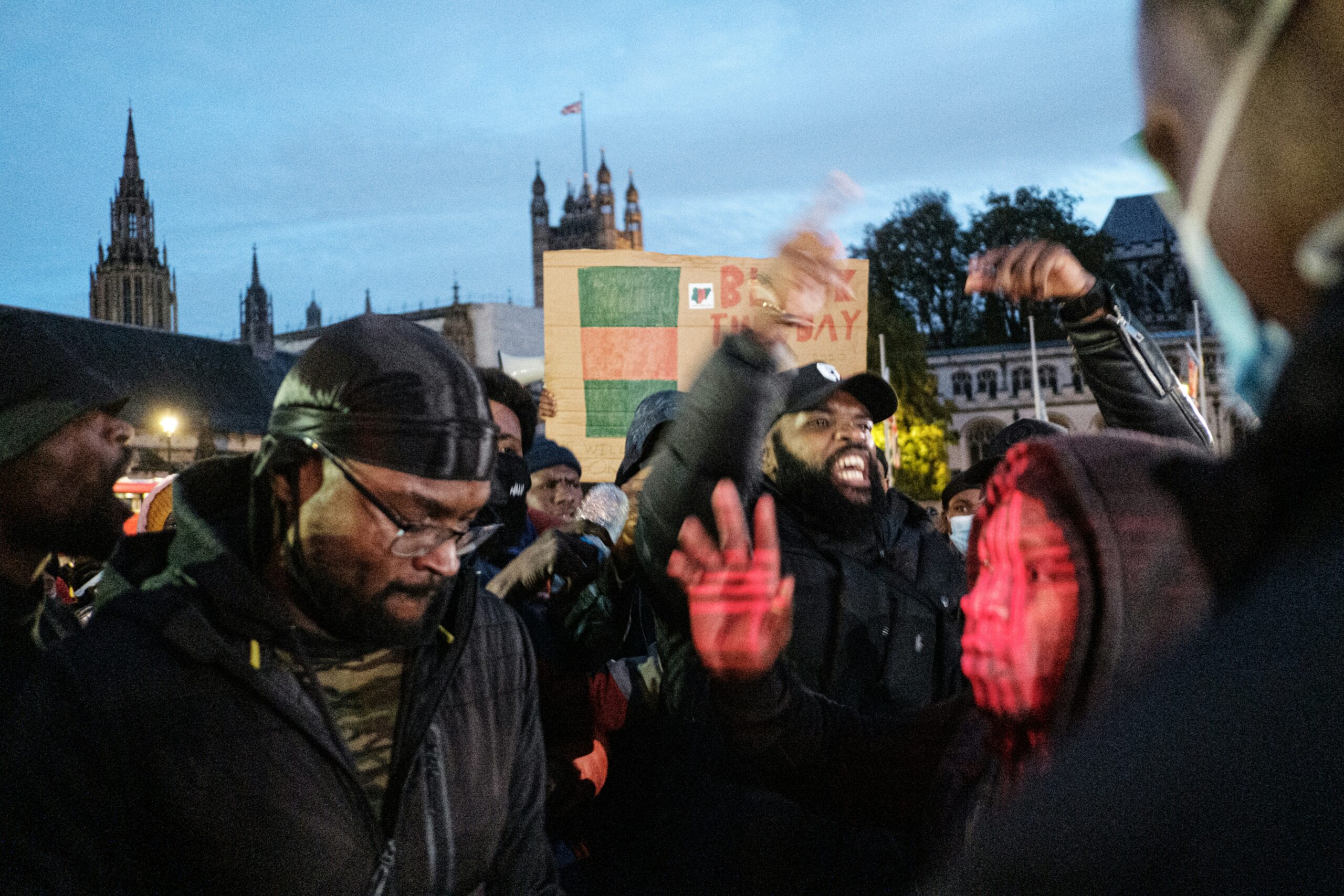Introduction to the 2023 UK Riots
The 2023 UK riots marked a significant period of civil unrest, capturing both national and international attention. Among the most affected cities were Liverpool and Sunderland, where the intensity of the disturbances highlighted deeper socio-economic and political issues. These riots unfolded over a series of weeks, beginning in mid-July and extending into early August. During this time, various neighborhoods experienced widespread disruption, compelling both governmental and non-governmental organizations to intervene.
The timeline of the riots can be traced back to an initial incident in Liverpool on July 15th, which acted as a catalyst for subsequent unrest. This event is widely acknowledged as the spark that ignited tensions, which had been simmering for months due to increasing economic instability and growing discontent with local authorities. As news of the Liverpool riots spread, similar incidents began to erupt in Sunderland, leading to a national crisis that necessitated a coordinated response from law enforcement agencies across the UK.
Several factors contributed to the heightened tensions that led to the 2023 UK riots. Economic hardships, exacerbated by rising inflation and unemployment rates, left many individuals and communities feeling marginalized and desperate. This economic strain was coupled with a pervasive sense of political disenfranchisement, where citizens felt disconnected from decision-making processes that significantly impacted their lives. Additionally, incidents of police misconduct in these regions had further agitated community relations, laying the groundwork for the widespread civil disobedience that ensued.
The riots drew heavy media coverage, bringing the underlying issues to the forefront of national discourse. International observers also took note, offering varied perspectives on the causes and implications of the disturbances. Amidst the chaos, local businesses suffered considerable damage, and public safety became a paramount concern. Understanding the extent and causes of these riots is essential for addressing the root issues and preventing future occurrences.
Historical Context: Past Unrest in the UK
The United Kingdom has witnessed several significant episodes of civil unrest over the past decades, each serving as poignant reminders of the underlying societal tensions. One of the most notable instances is the Tottenham riots of 2011, which erupted following the police shooting of Mark Duggan. These disturbances rapidly escalated into nationwide protests, engulfing cities like London, Birmingham, and Manchester. The core grievances fueling these riots were multifaceted, encompassing issues such as police-community relations, socio-economic disparities, and systemic discrimination.
Tracing further back, the Brixton riots of the 1980s similarly highlighted fractured community relations and economic inequalities. These events underscored a persistent narrative of disenfranchisement and lack of opportunities within certain segments of the population. The subsequent public inquiries and socio-political discourse unveiled the depth of mistrust between law enforcement and minority communities, exacerbated by pervasive unemployment and deprivation.
It is crucial to draw parallels between these historical contexts and the 2023 riots in Liverpool and Sunderland. The recurring themes of marginalization, economic hardship, and contentious policing practices appear to be consistent catalysts for civil unrest. While each episode of rioting is unique with its immediate triggers, the underlying systemic issues often bear striking similarities. This cyclical nature indicates that the societal reforms and interventions implemented post-riots have not fully addressed the root causes.
Both the historical and contemporary outbreaks of unrest underline a critical need for inclusive dialogue, effective policy overhaul, and community-centric approaches to policing and governance. The legacy of past riots serves as a stark reminder of the imperative to tackle the profound socio-economic divides and institutional biases that continue to plague urban and disadvantaged communities across the UK. Understanding and addressing these issues is paramount to preventing future occurrences and fostering a more cohesive and equitable society.
Liverpool’s Turmoil: Causes and Influences
In order to comprehend the tumult that unfolded in Liverpool during the 2023 UK riots, it is crucial to consider the multifaceted reasons behind the unrest. Socio-economic factors play a significant role in this narrative. Liverpool, a city historically marked by economic challenges, faces high levels of unemployment and underemployment, compounded by a widening wealth gap. The disparity between affluent neighborhoods and deprived areas has been a longstanding issue, fueling frustration and discontent among residents.
Community grievances have further exacerbated tensions. Reports indicate a deep-seated dissatisfaction with local governance and perceived neglect from authorities. Liverpool’s residents have expressed concern regarding inadequate public services, deteriorating infrastructure, and insufficient investment in community development. These grievances have created a fertile ground for civil unrest.
Specific incidents acted as catalysts for the riots. Cases of alleged police brutality and racial discrimination drew significant attention, intensifying the public’s anger. These incidents, shared widely on social media, sparked outrage and mobilized community members to voice their discontent. The role of social media in the 2023 riots cannot be underestimated; it served as both a tool for organizing protests and a platform for disseminating information, sometimes marred by misinformation.
Local politics also played a role in the discord. The perceived disconnect between political leaders and grassroots communities led to a lack of trust in the system. Statements from local officials often did little to assuage the concerns of an already aggrieved populace, further deepening the rift between the governing bodies and the governed.
Furthermore, law enforcement practices were heavily scrutinized during this period. The response of the police to initial protests was viewed by some as heavy-handed, which only served to escalate confrontations. Testimonies from residents recount experiences of excessive force, furthering the sense of injustice and amplifying the riots.
Expert analysis highlights that these factors are interlinked, creating a complex web of causes. Resident testimonies underscore the urgency of addressing these issues through meaningful dialogue and reform. As Liverpool continues to navigate the aftermath of these events, understanding the root causes is pivotal to preventing future unrest and fostering community resilience.
Sunderland’s Strife: Factors Leading to Unrest
The 2023 riots in Sunderland emerged from a complex interplay of economic disparities, community tensions, and specific inciting incidents. At the heart of the unrest was a pronounced economic downturn, exacerbated by the closure of key industries that had long been the economic backbone of the city. With unemployment rates significantly higher than the national average, the lack of employment opportunities fueled a sense of despair, particularly among the younger population.
Community tensions further compounded the volatile situation in Sunderland. Long-standing grievances within marginalized neighborhoods created an undercurrent of discontent. Reports highlight the disparities in housing, education, and access to public services, leading to perceptions of neglect and inequity. The simmering tension reached a boiling point with the implementation of austerity measures, which disproportionately affected the most vulnerable segments of the community.
Specific events and policies acted as catalysts for the riots. Notably, a controversial police action in a predominantly minority neighborhood heightened existing distrust between the community and law enforcement. Furthermore, the perceived inadequacy of government support during the economic crisis added fuel to the fire, igniting widespread protests that quickly escalated into riots.
Comparing Sunderland to Liverpool reveals both unique and common causative factors. While both cities experienced economic hardships and community tensions, the closure of critical industries in Sunderland had a more immediate and devastating impact compared to Liverpool, where diversified economic activities provided a buffer. Additionally, the nature of police-community interactions differed, with Sunderland experiencing more pronounced instances of conflict, possibly due to different policing strategies and community dynamics.
Personal accounts from Sunderland residents underscore the depth of disillusionment and frustration. One resident lamented, “We feel abandoned, with no jobs, no future, and no one listening to us.” Another highlighted the lack of avenues for meaningful dialogue between the community and local authorities, exacerbating feelings of disenfranchisement.
Understanding the multifaceted causes behind the Sunderland riots provides critical insights into the socio-economic fabric of the region. These insights are essential for addressing the underlying issues and preventing future unrest, not just in Sunderland but across similarly affected areas in the UK.
The Role of Social Media and Communication
In the 2023 UK riots, particularly in Liverpool and Sunderland, social media platforms and modern communication methods played a pivotal role in the dissemination of information and the mobilization of protests. These platforms, including Twitter, Facebook, and TikTok, acted as double-edged swords, providing both positive and negative influences on the events.
On one hand, social media was instrumental in raising awareness about the underlying issues that precipitated the riots. Hashtags such as #LiverpoolProtests and #SunderlandUnrest trended for days, drawing global attention and sparking discussions on economic disparities and social injustice. Viral posts and live streams from protest locations offered real-time updates, making it difficult for traditional media outlets to ignore the unfolding events.
Experts underscore the role of social media in sparking civic engagement, with data showing that posts related to the riots received millions of interactions. According to a study by the University of Cambridge, 70% of protest activity in Liverpool and Sunderland was organized via social media groups and events, enabling rapid mobilization and greater reach.
However, the ease and speed of information dissemination also brought significant downsides. Misinformation and rumors spread like wildfire, often exacerbating tensions. Instances of fake news and doctored videos were rampant, causing confusion and, in some cases, inciting further violence. A report by the BBC highlighted that 40% of the top-shared posts related to the riots contained false or misleading information.
Moreover, the anonymity provided by social platforms facilitated the spread of incendiary content, making it challenging to hold individuals accountable. According to cybersecurity experts, bots and fake accounts played a substantial role in amplifying divisive narratives, creating echo chambers that fueled unrest.
In summary, while social media and modern communication methods contributed significantly to raising awareness and organizing protests during the 2023 UK riots, they also posed challenges in terms of spreading misinformation and heightening tensions. Balancing the benefits and drawbacks of these powerful tools remains a critical concern for future social movements and public discourse.
Law Enforcement Response and Public Reaction
The 2023 UK riots in Liverpool and Sunderland prompted swift and decisive action from law enforcement agencies. The immediate response saw a significant increase in police presence in the affected areas, with reinforcements dispatched from neighboring regions. A primary measure implemented was the imposition of curfews, aimed at curtailing nighttime disturbances and restoring order. These curfews, however, sparked a mixture of public responses, with some communities expressing relief while others voiced concerns over potential infringements on civil liberties.
During the initial stages of the unrest, numerous individuals were arrested on charges ranging from vandalism to violent conduct. The arrests were intended to demonstrate the authorities’ zero-tolerance policy towards the riots. Law enforcement agencies also employed crowd control tactics such as dispersal orders and, in some instances, non-lethal measures to manage the escalating situation. In the wake of these events, there were calls for policy reform to address underlying issues contributing to the riots, alongside pledges to review police strategies during such crises.
Public reaction to the law enforcement measures was highly polarized. Supporters of the police actions argued that stringent measures were necessary to ensure public safety and prevent further chaos. They highlighted the importance of maintaining law and order during periods of civil unrest and praised the authorities for their rapid and robust response.
Conversely, critics accused the police of heavy-handedness, with reports of excessive force and perceived racial profiling. This led to protests against police brutality, emphasizing the need for transparent investigation into actions taken by law enforcement. These protests underscored a broader discontent with systemic issues and called for comprehensive reform within the police force.
The diverse reactions to the police response highlight the complex dynamics at play during the 2023 UK riots. It is essential to understand these varied perspectives to fully grasp the law enforcement challenges and the societal impacts of such significant events.
The Aftermath: Short and Long-term Consequences
The immediate aftermath of the 2023 UK riots left significant scars on the communities of Liverpool and Sunderland. In the short term, the economic damage was palpable. Numerous local businesses were looted and vandalized, leading to substantial financial losses and a surge in unemployment. The disruption of daily life also took a toll on public services and infrastructure, with many areas needing urgent repairs and heavy investments.
Beyond the visible destruction, the riots deeply affected community relations. Trust between residents and law enforcement deteriorated, fueled by accusations of excessive force and inadequate response times. In neighborhoods already struggling with social cohesion, this further exacerbated tensions, making reconciliation harder to achieve. The psychological impact on residents, particularly younger individuals who witnessed the violence, cannot be underestimated. Schools and community centers have reported an increase in anxiety and trauma-related conditions.
In the long term, the consequences of the riots may shape both cities for years to come. The economic recovery is projected to be slow, particularly for small businesses. Efforts are being focused on creating job opportunities and providing financial assistance to those directly affected by the riots. However, these measures alone may not suffice to restore economic stability.
Community relations will require intensive rebuilding efforts. Initiatives such as community policing, dialogue forums, and local leadership programs have been introduced to mend the rift between residents and authorities. These efforts are aimed at fostering trust and cooperation but will necessitate sustained commitment and transparency to be effective.
Policy shifts are also on the horizon. The government has initiated inquiries into the causes of the unrest, aiming to address systemic issues such as economic disparity, social exclusion, and inadequate public services. Proposed reforms include increased funding for education, social housing, and healthcare. While these measures are steps in the right direction, critics argue that they lack the depth needed to tackle the entrenched issues fully.
The steps taken to rebuild Liverpool and Sunderland are promising, yet challenging. Addressing the root causes of the unrest will require a multifaceted approach and long-term commitment from all stakeholders involved. Building back the communities stronger and more resilient than before is the ultimate goal, but it is a journey that demands collective effort and persistent vigilance.
Future Implications and Lessons Learned
The 2023 riots in Liverpool and Sunderland serve as a stark reminder of the multifaceted challenges facing the UK. These events underscore the urgent need for both immediate action and long-term strategic planning to prevent similar occurrences in the future. A thorough examination of the riots reveals a complex interplay of socio-economic disparities, systemic inequalities, and community discontent. These factors, in combination, create a fertile ground for unrest, highlighting the necessity for comprehensive and multifaceted responses.
Experts agree that addressing underlying socio-economic issues is paramount. Dr. Ellen Harris, a sociologist at the University of London, emphasizes the importance of economic reforms aimed at reducing unemployment and providing better educational opportunities. “Economic disenfranchisement often acts as a catalyst for discontent,” she notes. By creating job opportunities and strengthening social safety nets, the government can tackle the root causes of such upheavals.
Community engagement is also crucial. Strengthening the relationship between local authorities and communities can foster a sense of trust and cooperation. Initiatives that encourage open dialogue and community participation in decision-making processes can bridge gaps and reduce tensions. Sarah Thomas, a community organizer in Liverpool, suggests that “Grassroots programs and participatory governance can empower communities, making them active stakeholders in their own development.”
Policy changes focused on equality and inclusivity are vital. Legislative measures that ensure equitable access to resources, justice, and opportunities can address the systemic inequities that often fuel unrest. The introduction of policies aimed at promoting social integration and protecting marginalized groups can create a more inclusive and cohesive society.
Furthermore, the riots illustrate the need for a proactive approach to crisis management. Developing robust strategies for early detection and intervention can mitigate the impact of potential conflicts. Investment in social services, mental health support, and youth programs can act as preventive measures, diverting potential unrest into constructive outlets.
The 2023 riots in Liverpool and Sunderland have undeniably highlighted the necessity for multilevel interventions. By learning from these events and implementing a combination of economic, social, and legislative measures, the UK can hope to create a more resilient and harmonious society, prepared to tackle the challenges of the future.


